Renewable energy education and art. To inspire educators and students to become more informed decision makers and problem solvers.
Don't wanna be here? Send us removal request.
Text
Power Grid Kit Put to the Test

We’re pretty proud of what we do on behalf of energy education here at REcharge Labs, but we always feel that much prouder when we hear from someone who’s put our products to the test. Not long after we launched our new Power Grid Kit, we received a very gratifying reply from Sharon Gutierrez, Education Coordinator for Riverside Public Utilities in Riverside, California.
As a longtime fan of REcharge materials, Sharon knew just what to do when management asked her to come up with a demonstration to teach the public how electric utilities operate. “I showed them the mini-grid and was immediately given the okay to purchase it,” said Sharon. “It arrived in record time and I set it up in my office immediately. My office is now the place to be, whether I’m here or not.”
This week, Sharon is bringing the Power Grid Kit to her local Science Technology Engineering Partnership (STEP) chapter conference, which showcases utility industry careers to around 5,000 middle and high school students. “Since we get 3% of our power from the Cabazon wind farms, in class I talk a lot about wind energy and have a 6th grade class devoted strictly to the topic of wind,” said Sharon. “[At STEP] our engineers will discuss the way wind energy is added to the grid and the need to increase the renewable portfolio.”
After that, Sharon is bringing the Power Grid Kit to the public again, this time at the request of the mayor (Seriously, we’re flattered!) for an event called “The Long Night of Arts and Innovation.” “This event is modeled after an event in Germany and is an effort to get citizens out to see what innovative thinking/living ideas our three local universities, community college, industry and government are working on,” explained Sharon,
We couldn’t be more pleased to see educators like Sharon putting REcharge materials to work in such public venues. Our number-one goal as a company has always been spreading new ideas and education about the ever-evolving field of renewable energy. It means the world to get some confirmation that our efforts are making an impact.
Sharon closes out her note with some further words of encouragement: “Thank you again for another awesome project that makes the topic of wind energy and renewables come alive, even for adults who didn’t know they had an interest. It beats the heck out of me having to drag out meters, bits of wire and other failed equipment that just looks so dull, for visual aids for these events.”
You’re more than welcome, Sharon. Our thanks to you and to everyone else who helps make the REcharge Labs mission a reality.
Want your own chance to use the Power Grid Kit with your community or classroom? Click here to learn more.
0 notes
Video
vimeo
Save 10-40% on almost everything in our Store, including our ever-popular Solar Fountain! http://www.rechargelabs.org/fall-kit-sale
0 notes
Text
Join our National Clean Energy Week webinars
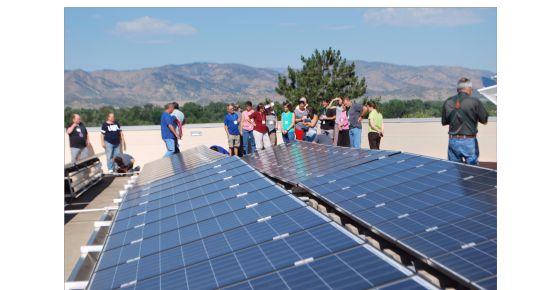
To the casual observer, these might appear to be tough times for renewable energy. There’s a lot of buzz from politicians and executives about doubling down on fossil fuels, cutting funding for alternative energy research and the like. We certainly understand why that kind of talk might be scary for folks who believe investing in renewables is not just smart, it’s necessary. Here’s the good news: no matter how much noise the old guard makes, renewable energy is here to stay, and the technology and education around it is improving every day.
That’s some of the thinking behind the first National Clean Energy Week, a new event organized by some of the leading thinkers and businesses in the clean energy industry. For the week of September 25-29 (and also beyond), the group is organizing a wide range of activities and advocacy efforts across America in an attempt to raise awareness, affect policy change, and encouraging innovation.
We here at REcharge Labs are firm believers in the ideals laid out by National Clean Energy Week, obviously. We’re doing our part by producing a week of free renewable energy education webinars for K-12 educators (or anyone else who takes an interest). These webinars will show you how to use gear, teach you a little about wind or solar and allow you to ask questions. Participants will also get coupons for REcharge Labs gear at the end of the webinar!
Check out the schedule below and be sure to register soon. These slots will fill up quickly. Thanks for reading, and for caring about the energy that will power our future!
REcharge Labs Webinars
Solar Scavenger Hunt, Monday, 9/25, 2-3pm CST Register Now
MacGyver Wind Power, Tuesday, 9/26, 11am-12pm CST Register Now
Solar Rover, Wednesday, 9/27, 3-4pm CST Register Now
Wind Turbines & the KidWind Challenge, Thursday, 9/28, 2-3pm CST Register Now
Power Grid Kit, Friday, 9/29, 1-2pm CST Register Now
0 notes
Text
Build a mini-city with the REcharge Labs Power Grid Kit

If you’ve been following REcharge Labs for a while, you’ve seen us apply our expertise to a wide range of innovative educational tools, from DIY wind turbines to build-your-own solar rovers. Starting this fall, REcharge is proud to introduce our most ambitious project to date, the Power Grid Kit, available soon in the REcharge store. This modular platform is designed to help K-12 students explore how the electrical grid functions.
Rather than building a single solar fountain or windmill, students use the Power Grid Kit to build an entire city, complete with buildings, homes, and power stations. It’s a miniaturized version of a functioning urban electrical grid that lets students explore not just traditional power generation resources, but also the impact of solar and wind power along with electric vehicle charging, smart grid technology, and energy efficiency.
Designed with easy-to-assemble wooden blocks, the Power Grid Kit provides a solid visualization of how an electrical grid and its components work together to bring electricity to our homes and businesses, an important concept that’s all too easy to ignore. “We use electricity every day, but explaining how it’s delivered, consumed and measured is not an easy task,” said Asia Ward, Co-Director of REcharge Labs. “The Power Grid Kit takes a hands-on approach to explaining a complex concept. It’s great for the classroom, and it’s also a powerful tool for science museums or utility companies looking to educate communities about their work.”
Even better, REcharge Labs plans to make the Power Grid Kit available on a loaner basis for groups who can’t or don’t wish to buy it outright. Stay tuned to this space for more details on our first-of-its-kind loaner program.
0 notes
Video
vimeo
August is the perfect time for a #Solar Scavenger Hunt! Watch the video and get searching. http://www.rechargelabs.org/solar-scavanger-hunt
0 notes
Text
How to make a solar rover
Build a Solar Rover that uses power from the sun, then design wheels to explore imaginary planets (or your backyard)!
When scientists and engineers send out a rover to Mars, which is more than 33 million miles away from earth, they make sure it has power so it can move around. Power allows them to control and navigate the rover. The rover collects and sends data back to scientists and engineers here on earth.
Power and wheels are two of the many important components on a rover. In this activity, the goal is to make a Solar Rover that can travel from point A to point B over obstacles and terrains.
Through this designing and engineering process, you will learn;
How to harness the cleanest and most abundant renewable energy, solar energy.
Learn about basic circuitry with a solar panel as a power source, spring connectors as input, and motor as an output.
With the material provided in our Recharge Lab's kit, it includes a super capacitor as an energy storage option. You will learn about the importance of storing energy and why it's needed when it comes to solar energy.
You will learn about traction by experimenting with different materials and wheels designed to overcome the rough and unforeseen terrains a Rover must face.
You are highly encouraged to manipulate and change the shape and design of the non electronic parts.
If you choose not to get the kit from REcharge Labs, you can easily find the materials used in this activity with a couple searches.
Step 1: Here Are the Materials You Will Need

Rover's main parts:
(1) 2” by 6” Cork base
(1) Gear motor
(1) Solar panel
(1) Solar panel stand (optional for Charging station)
(1) 2.7V-10F super capacitor
(1) Straw for front axle holder
(1) Candy melts treat stick, or paper stick ( axle)
(1) Roll of masking tape
(2) Spring connectors
(4) Axle adapters (here is a link to 3D print the axle adapters,
or you can get them from rechargelabs.org).
(4) Pool noodle foam wheels
Optional wheels exploration parts:
Thick rubber bands (size of the rubber band must fit with the foam wheels)
Different grit of sandpaper
Screws to make studded wheels
Scissors to trim or change wheels.
Other materials around the house or classroom to experiment with traction.
Step 2: Rover's Frame


Use a cork sheet as the frame of the rover. Put a spring in each hole on the cork. These springs will act as connectors.
Step 3: Motor With Axle Adapters


Take two axle adapters and the motor. Force fit the two axles onto the motor. Try to push them both on at the same time with pressure from each side.
Step 4: Motor on the Frame.


Now, tape your motor to the cork frame. Or use rubber bands to hold the motor to the cork frame.
Step 5: Front Axle Holder




Cut the straw to the width of the cork frame. Place it in the front end of the cork frame. This straw will hold the front axle in place.
Step 6: Front Axle



With the paper stick, put in one of the axle adapters. Then put the other end through the straw/axle holder on the rover. Finish the front axle with another axle adapter.
Step 7: Spring Connectors



Connect the motor wires to each spring. Put each wire through a spring hole from the bottom up. On the top side, bend each spring to clamp down each wire. Make a note on which color wire is connected to which spring. Red is positive (+) and Black is negative (-). The wires from the motor can also go on the side of the rover. It does not has to go through the hole of the springs.
Step 8: Storing Energy
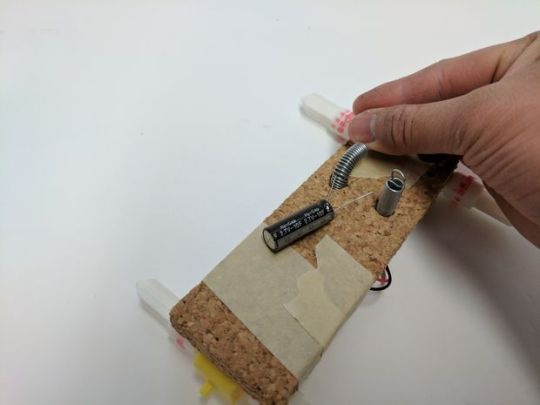

Use a supercapacitor as energy storage. Connect the supercapacitor to the motor by putting the longer leg to the spring where the red (+) wire is connected to. Then connect the shorter leg on the supercapacitor to the spring where the black (-) wire connected to.
Step 9: Adding Wheels


Adding wheels to each axle. At this point, try not to add anything or make change to the wheels just yet. Make changes to the wheels after testing to see if the Solar Rover works.
Step 10: 3 Ways to Make the Solar Rover Move. Method 1: Charging Station

To make the charging station, create a stand for the solar panel. Or you can use a suction cup phone stand to hold the solar panel.
To charge the Rover, connect the red (+) wire from the solar panel to the positive spring and the black wire to the negative spring. Put it out in the sunlight for about 30 seconds or until the Rover starts to move. When the Rover is ready and starts to move, disconnect the rover from the solar panel. Try to time the rover to see how far it can go depending on how long it's charged.
Step 11: Method 2 ...Solar Panel and Supercapacitor On-board

Have the supercapacitor and the solar panel on board. To do so, follow the same connection as the previous step but put the solar panel on the rover instead of a stand.
Step 12: Method 3: Direct Connection to the Solar Panel


You can experiment with connecting the solar panel directly to the motor without a super capacitor.
Step 13: Traction Exploration

After testing and making sure that the Solar Rover works, it's time for traction experiment. The wheels can be cut into or adding more materials on to. Test and observe to see what materials work best on what surfaces?
Step 14: Observation and Data Collection

What are the advantages and disadvantages of:
What materials have more traction on what surface?
Having a charging station?
Having a solar panel on the rover with direct connection?
Having a solar panel on the rover and super capacitor as power storage?
For a complete kit and more experiments with Solar and Wind energy- visit our website at rechargelabs.org
Step 15: Tip 1: Broken Wires




The pin of each wire from the motor might break due to the spring clamping on it. The motor is not broken, and the part is easy to fix! If this happens, cut off the black plastic piece then strip and expose the wire about half an inch. Bend the spring and insert the exposed wire between the gap. The spring should hold the wire in place. Now connect the solar panel to the spring on the rover using the alligator clip. Position the solar panel on the rover and use rubber band to secure it in place.
Step 16: Tip 2: Walk Up Activity Version Attach the Springs Onto the Solar Panel


To do this activity for drop in program and are out in the sun, it helps to have the Solar Rover connected directly to the solar panel through the springs. Cut the end loop of the spring to a half loop or like a hook as seen on the picture.
Step 17: Hook the Springs to the Solar Panel.



Hook the springs to the solar panel. Use a flat head screw driver to tighten each spring to the solar panel. Stand the springs up right.
Step 18: Connect the Solar Panel to the Rover


Push each spring into a hole on the rover. Tilt the solar panel up to connect each wire to the spring.
0 notes
Text
Checking in from REcharge Academy 2017
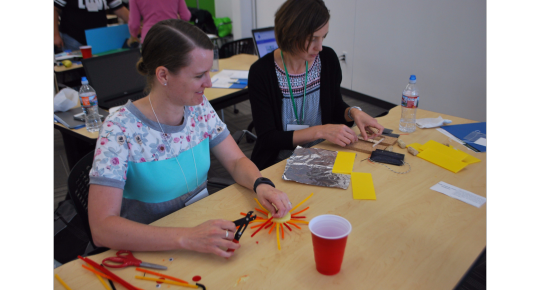
Hi everybody! It’s Wednesday and we’re in the thick of REcharge Academy 2017 at Colorado State University’s Powerhouse Energy Campus. We won’t detail every last thing we’ve gotten up to – it’s a lot! - but here’s a rundown of some highlights from the first couple of days. Day one included a lot of getting to know each other and learning what brought us together at the Academy. We created flipgrid videos introducing ourselves. Those stories varied from childhood dreams of building a solar car to an EDP Renewables-supported community outreach. Thai led an activity for the first time and did a great job, introducing ideas I had not thought of bringing up, and Mike and I only interrupted him twice! (Tall order for two overly enthusiastic educators.) We created videos about the impacts and misconceptions of Solar and Wind Power. If was fun to use stop motion animation to demonstrate silly ideas but also the serious impacts that social and political opinion can have on the development of wind and solar power. Some videos are serious and many are funny! Hard to believe that a bunch of adults made them! On day two we learned about energy and wind power, then spent most of the day participating in a renewable energy festival. We created turbine blades, measured turbine power output in a huge wind tunnel, played with sailboat designs and tested them on land boats, mastered how to turn everyday materials into a weight-lifting windmill, discovered how to pump water using only solar, and lastly, experimented with power storage in a Solar Rover terrain race. Our longtime friend and Wind Senator Andy Lueth was in charge of the wind tunnel and led a grand finale activity with the leading wind turbine output winners. It was a full and exhausting day, many prizes were awarded, and the group ended the day with applause. I say this every year, but this group is truly awesome, and my hopes of them doing great things in the world are high. I think that’s largely because our Academy Participants want to be here. They feel that urgency to do good things and think big, and teaching about renewable energy is how they want to make that difference in the world. Every Academy I am grateful that the participants took a chance on us. I know our activities are good and will work, but I understand the difficulty of taking a week out of summer, and the strangeness of working with a new company.
- Asia Ward, REcharge Labs Co-Director
0 notes
Photo






We’re all set up for REcharge Academy 2017 at Powerhouse Energy Institute in Fort Collins! Kicking things off this morning and looking forward to a week of teaching, learning, and exploring energy education.
0 notes
Text
REcharge Academy 2017 is almost here

Renewable energy education is an everyday thing here at the labs, but once a year we focus our efforts even more when we host our annual REcharge Academy. While the week leading up to the Academy is a lot of work, it’s always worth it when we’re in the thick of it, leading workshops and sharing ideas with science educators from all across the country.
REcharge Academy 2017 takes place at the Powerhouse Energy Campus at Colorado State University in Fort Collins, Colorado (alma mater of REcharge co-founder Asia Ward) from July 17-21. We’ll be hosting 28 teachers and administrators for five days of learning, bonding, and building. We’ve planned a full slate of activities, including creating animations, building wind turbines, a solar scavenger hunt, using a model power grid kit, and much more. And of course there will be presentations on topics like NREL wind and solar research, tours of NREL and Vestas facilities, the Powerhouse Energy Campus, and other deep dives for energy geeks (we’re all academics here, after all).
REcharge Academy operates under the same principles that drive all of our efforts: the belief that renewable energy education is both a vital part of our future and a chance to try new things, test limits, and discover new paths. If you couldn’t make it out to Colorado, we’ll try to share as much of this year’s event as we can via social media. Keep an eye on our Twitter, Facebook, and Instagram feeds for highlights and photos from the Academy. And if you’re at the Academy, don’t forget to use the hashtag #RLAcademy2017 when you post your favorite moments.
That’s all for now. We’ll check back Monday with the latest from Fort Collins!
0 notes
Text
Our Office at REcharge Labs
Written by Zach Damond-Midnight
Photography by Zach Damond-Midnight
REcharge Labs has an office in the 2010 Artblok buildings, located in NE Minneapolis. We love working in this building, which has businesses that range from sculpture fabricators, glass blowers, to cosmetic laboratories, catnip factories, and chocolatiers. The 2010 Artblok was a General Mills laboratory and research facility between 1930 and 1965. It is believed that Cheerios and Kix were all invented here, and some of the walls and floors are still painted Cheerios yellow and Wheaties orange.
Asia Ward, a Principal and Co-founder of REcharge Labs, is also a sculpture artist. Hanging in our office is one of her aluminum landscapes “Angel Cloud.” Asia Ward had a sculpture studio in one of the fabricator buildings from 2012-2014, and in 2015 decided to move REcharge Labs to one of the 2010 Artblok office buildings.
The project room is where we prototype new activities and products. Thai, our Outreach and Product Specialist, enjoys having his office right in the middle of it.
The 2010 ArtBlok complex is connected by many underground tunnels. Below is a photograph of the Wheaties tunnel.
There are artists of all trades and skills here at 2010 East Hennepin Ave. Asa Hoyt constructed the outdoor 3 season workspace located within the garden Grotto.
FOCI - Minnesota Center for Glass Arts occupies one of the buildings. During my breaks I will often check out what artists are up to. It’s like walking through an art gallery.
References
http://first-first.com/places/2010
http://www.blog.generalmills.com/2013/01/new-creations-at-our-old-research-complex/
https://www.tcdailyplanet.net/former-general-mills-research-and-development-complex-becomes-arts-haven-hennepin/
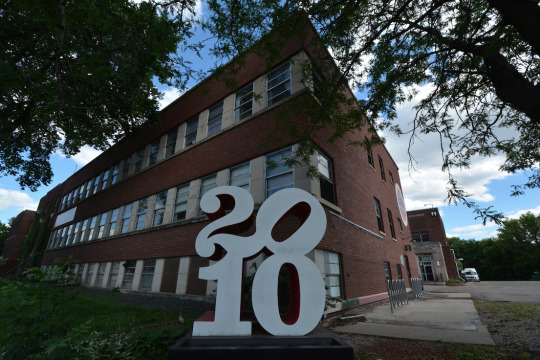
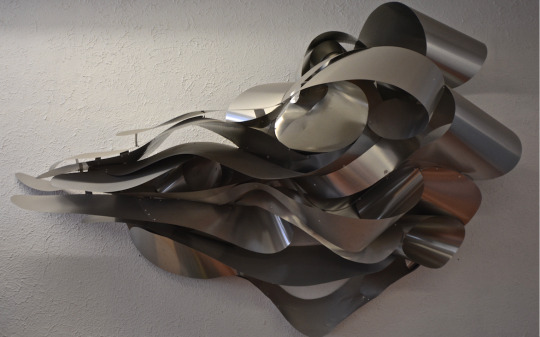
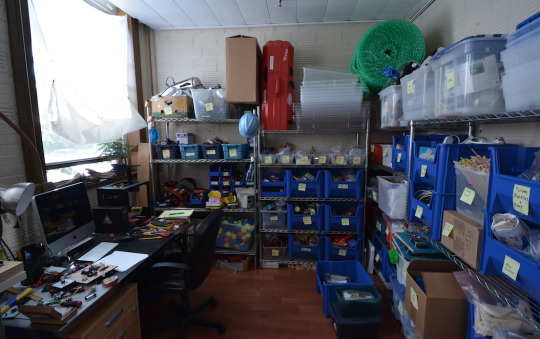
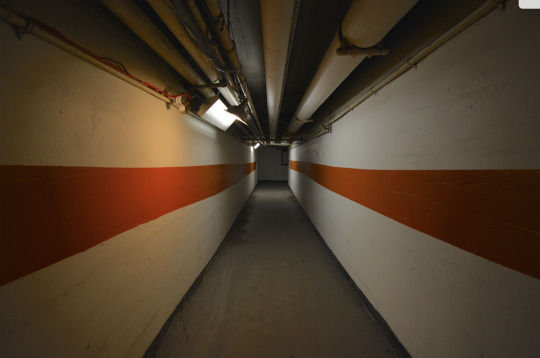
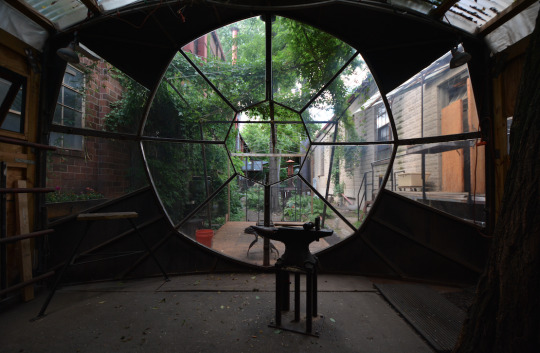
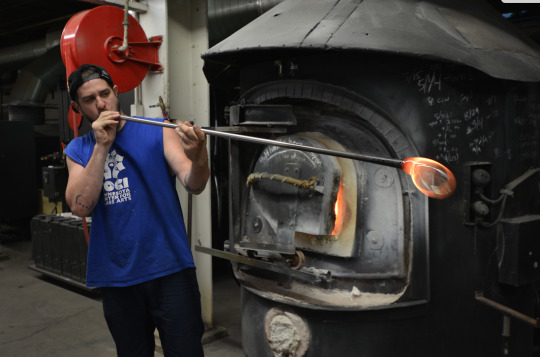
#REchargeLabs#2010ArtBlok#Create#Creativity#ReUse#Innovate#Art#Artists#GlassBlowing#MetalWork#Architecture#Sculpture
0 notes
Photo

Solar Town
Build a Solar Town with five small solar powered houses, then learn basic circuitry to wire them with lights, motors, switches, and power storage devices. Use a single house to learn about energy consumption and efficiency, and connect all of the houses to model the electrical grid. A great activity to model real world applications, and then participate in the Solar House Design Challenge.
Serves 5-15 students (5 Houses). Recommended age range between 4-12th grade. Approximately 4-5 class periods required.
http://www.rechargelabs.org/solar-town-class-pack
#REcharge Labs#Renewable Energy#Education#Create#Creativity#Solar Energy#Solar Power#Solar House#experiment
0 notes
Photo

Solar Fountain
Learn how to use the power of the sun to build a creative electrical fountain. Discover how solar panels work, learn basic circuitry, and use this knowledge to build a custom solar powered fountain.
Single Kit - Includes 1 Fountain. Recommended age range between K-12th grade. Approximately 1-2 class periods required.
Class Pack - Serves 5-15 students (5 Fountains). Recommended age range between K-12th grade. Approximately 1-2 class periods required.
http://www.rechargelabs.org/solar-fountain
Activity Guide - http://www.rechargelabs.org/sites/default/files/SolarFountain_ActivityGuide_v2_0.pdf
#Renewable Energy#REcharge Labs#Education#Create#Creativity#Experiment#Solar Energy#Solar Power#Solar Fountain#Activity for kids
0 notes
Photo

Solar Cork Boat
Build a Solar Cork Boat to demonstrate how energy from the sun can be harnessed to do work. Learn basic solar circuitry to connect a motor to the solar panel, then use simple engineering design to make paddles that propel the boat as far and as fast as possible. Solar panels and motors are rugged and built for repeated classroom use.
Single Kit - Includes 1 Cork Boat. Recommended age range between 2-12th grade. Approximately 1-2 class periods required.
Class Pack - Serves 5-15 students (5 Cork Boats). Recommended age range between 2-12th grade. Approximately 1-2 class periods required.
http://www.rechargelabs.org/solar-cork-boat
0 notes
Photo

Solar Scavenger Hunt
Head out on a Solar Scavenger Hunt to find which light sources and conditions generate the most solar power. Gather data, record changes in variables, and measure solar power output. This kit includes everything for a successful Solar Scavenger Hunt, but parts may also be used to supplement solar circuits in our kits like the Solar Town Class Pack.
Single Kit - Includes 1 Solar Scavenger Hunt set. Recommended age range 4-12th grade. Approximately 1 class period required.
Class Pack - Includes 5 Solar Scavenger Hunt sets. Recommended age range 4-12th grade. Approximately 1 class period required.
http://www.rechargelabs.org/solar-scavenger-hunt
#Renewable Energy#Recharge Labs#Create#Creativity#Solar#Solar Power#Solar Energy#Scavenger Hunt#Fun#Experiment#Education
0 notes
Photo

Solar Rover
Learn how solar panel variables, such as angle, shade, and load, effect the type of terrain a rover can cover. Then build custom tires, learning about friction, weight, and torque, in order to climb the highest, rockiest peak.
www.rechargelabs.org
#solar energy#solarpower#solar rover#education#REcharge Labs#Renewable Energy#Create#Customize#Creativity
0 notes
Photo
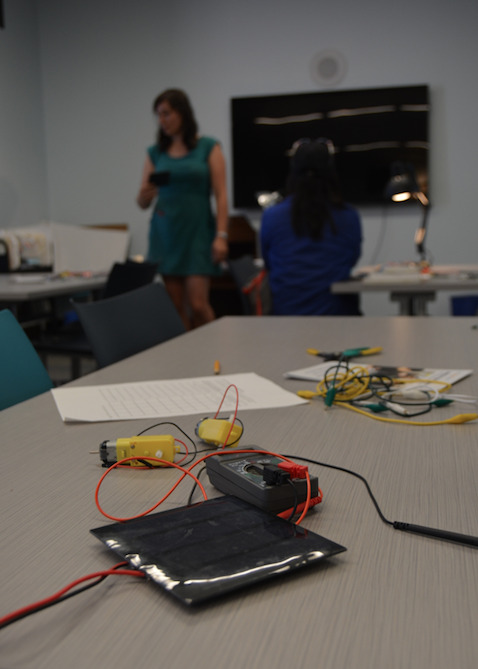
Purchase your own Solar Scavenger Hunt Kit to experiment with solar panel variables in order to power lights and motors!
http://www.rechargelabs.org/solar-scavenger-hunt
0 notes
Photo

Many people came by our Solar Rover activity to assemble and experiment throughout the @MakerFaireMSP! Link below to buy your own! #RechargeLabs #MakerFaireMSP #RenewableEnergy #SolarRover
www.rechargelabs.org
0 notes